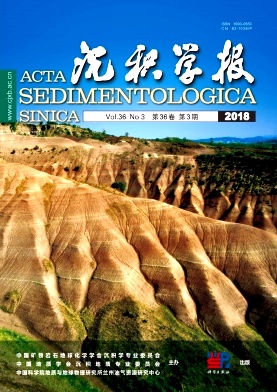Using FMI Data to Analysis the Sedimentary Characteristics of Glutenite: A case study from the lower Cretaceous Shahezi Formation in the Anda area, Xujiaweizi fault depression, NE China
doi: 10.14027/j.issn.1000-0550.2018.033
- Received Date: 2017-04-24
- Rev Recd Date: 2017-06-12
- Publish Date: 2018-06-10
-
Key words:
- formation micro-resistivity imaging logging /
- sedimentary characteristics /
- Xujiaweizi fault depression /
- Shahezi Formation /
- glutenite /
- palaeocurrent direction
Abstract: The research object of this paper is to classify sedimentray cycles and facies of single well sandy conglomerate bodies as the glutenite of SQ4 of the Lower Cretaceous Shahezi Formation in Anda area, the Xujiaweizi fault depression, based on abundant imaging well logging data. According to paleocurrent features and seismic attribution, the sedimentary characteristics are identified for the study area. The resaults showed that the sediments of Shahezi Formation were mainly composed of coarse clastic rocks according to the imaging well logging calibration through the core data. Conglomerate has a middle-poor sorting and rounding and shows bright splashes shape on FMI. Sandstone mostly reveals light grey and grey, the medium and fine sandstone and mostly reveal shining ribbon on FMI. They developed crossing bedding, graded bedding and other bedding types. And various deformation structures such as ball-and-pillow structure, load structure, slump structure are also developed Based on these FMI data of different lithology, different sedimentary structure and different sedimentary facies, the sequence map with high-accuracy is built up, in which the parameters change vertically, such as the lithology, grain size, rounding, sorting and so on. Four sedimentary facies developed such as fan delta, braided delta, lake and nearshore subaqueous fan. Sequence 4 is divided into three fourth-order sequences in Anda area. Palaeocurrent direction and distribution of sedimentary facies has a little difference in different fourth-order sequences. As a whole, fan deltas was mainly facies type, nearshore subaqueous fans partly developed in steep slope zone and braided delta developed in gentle slope zone. The front area with channel sandstone and lake mudstone shows a finger interaction, developed an overlay of source rock and reservoir rock, and the reservoir forming element matched well, all of which make this area as a favorable exploration area.
| Citation: | ZHANG DaZhi, CHU LiLan, WANG XiaoLian. Using FMI Data to Analysis the Sedimentary Characteristics of Glutenite: A case study from the lower Cretaceous Shahezi Formation in the Anda area, Xujiaweizi fault depression, NE China[J]. Acta Sedimentologica Sinica, 2018, 36(3): 584-595. doi: 10.14027/j.issn.1000-0550.2018.033 |






 DownLoad:
DownLoad: